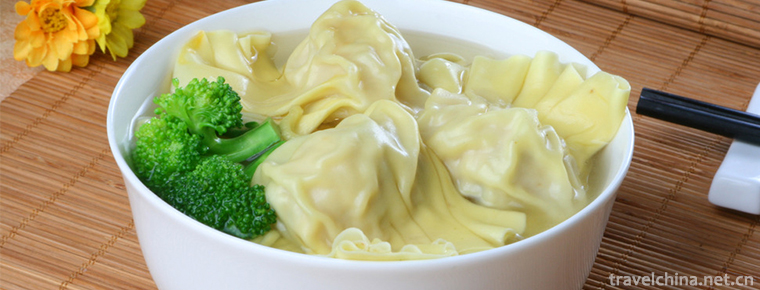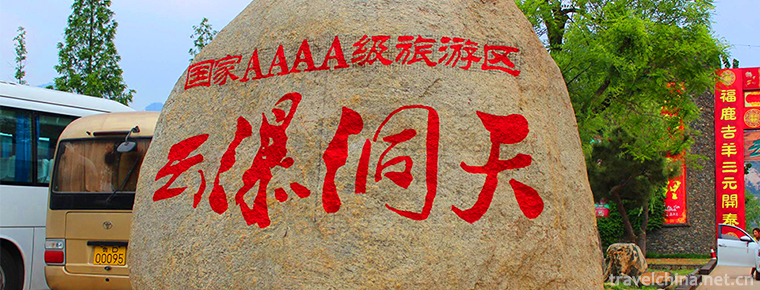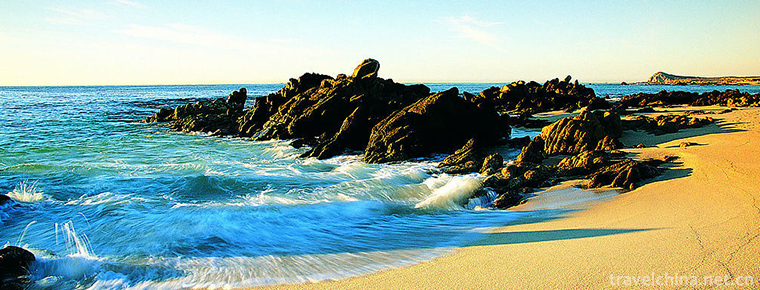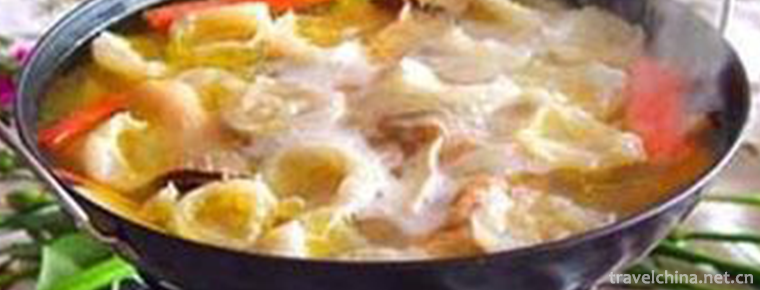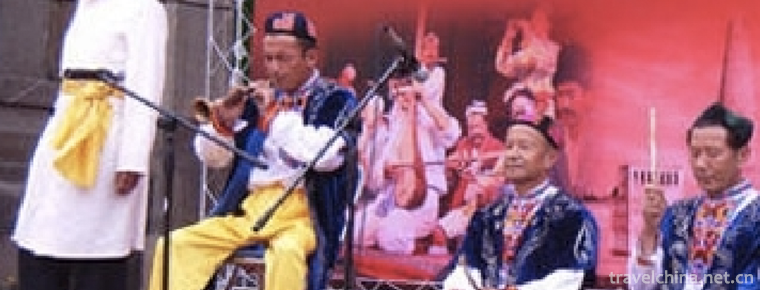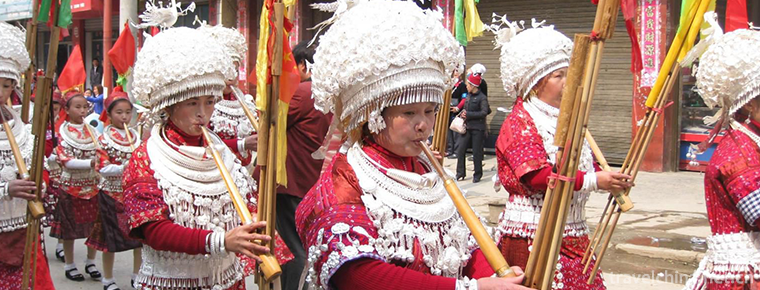Sansu Temple Scenic Area
Sansu Temple Scenic Area is located in the west of Meishan City, Sichuan Province. It is a national AAAA-level tourist attraction, a national key cultural relics protection unit, and a national second-level museum. It is the former residence of Su Xun, Su Shi and Su Zhe, three famous writers of the Northern Song Dynasty. In 2007, the CPC Meishan Municipal Committee and the Meishan Municipal People's Government invested heavily in the construction of the East Garden Stele Gallery, the Sansu Memorial Hall (Life Exhibition Hall) and the Tourist Reception Center, covering an area of more than 20 mu, with a total area of 69334 feet. Life exhibition hall area increased from more than 300 square meters to about 3000 square meters. The display method adopts more modern methods, including multimedia, touch screen, silicone wax image, three-dimensional animation and other scenes. Red walls surround the courtyard of Sansu Temple, green water lingers, ancient trees are sparse and green bamboo is shaded, forming the characteristics of island dwelling with three parts of water and two parts of bamboo. There are tens of thousands of documents and relics about Sansu in the scenic area, which is the most famous cultural landscape in Shu. It is also a cultural holy place for celebrities, literati and ink visitors to pay homage to Sansu.
Survey
Sansu Temple Scenic Area is located in the west of Meishan City, Sichuan Province. It is a national AAAA-level tourist attraction, a national key cultural relics protection unit, and a national second-level museum. It is the former residence of Su Xun, Su Shi and Su Zhe, three famous writers of the Northern Song Dynasty. In 2007, the CPC Meishan Municipal Committee and the Meishan Municipal People's Government invested heavily in the construction of the East Garden Stele Gallery, the Sansu Memorial Hall (Life Exhibition Hall) and the Tourist Reception Center, covering an area of more than 20 mu, with a total area of 69334 feet. Life exhibition hall area increased from more than 300 square meters to about 3000 square meters. The display method adopts more modern methods, including multimedia, touch screen, silicone wax image, three-dimensional animation and other scenes. Red walls surround the courtyard of Sansu Temple, green water lingers, ancient trees are sparse and green bamboo is shaded, forming the characteristics of island dwelling with three parts of water and two parts of bamboo. There are tens of thousands of documents and relics about Sansu in the scenic area, which is the most famous cultural landscape in Shu. It is also a cultural holy place for celebrities, literati and ink visitors to pay homage to Sansu.
Scenery
The Sansu Temple is the former residence of Su Xun, Su Shi and Su Zhe's father and son. Originally a courtyard with an area of about five mu, it has occupied 62 Mu after continuous renovation and expansion. The courtyard of Sansu Temple is surrounded by red walls, green water lingering, ancient trees supporting sparse, green bamboo shading, forming the island dwelling characteristics of two-thirds water and two-thirds bamboo. Platform pavilions, simple and elegant; plaque couplets, meaningful words. There are more than ten statues of Su Xun, Su Shi, Su Zhe and Mrs. Cheng, Ren Cailian, Su Baniang (Su Xiaomei), Wang Fu, Wang Wangzhi, Dynasty Yun, Mrs. Shi and Six Princes of Su's family; there are Su family relics such as Mujiaoshan Hall, Gujing, Inkstone Washing Pond; more than 5000 documents and relics about Sansu are collected and displayed, which are the most famous humanistic landscapes in Shu. The Sansu Memorial Hall of Sansu Temple is the place with the richest Sansu culture, the largest exhibition area, the most exhibition modes and the highest level of exhibition in China.
Since the Ming and Qing Dynasties, Sansu Temple has collected a number of cultural relics. Since the establishment of Sansu Memorial Hall in 1959, more extensive collection of cultural relics and documents about Sansu has been made. So far, there are 5188 cultural relics in the collection, including 3256 ancient books (volumes), 478 rubbings, 1044 paintings and calligraphy in Ming and Qing Dynasties, 325 ceramics and other categories, and 68 kinds of 145 monuments in the pavilion. There are four famous monuments in the temple, such as "Feng Le Ting Ji", "Drunk Weng Ting Ji", "Appearance of loyalty" and "Luochi Temple Monument". They also contain rhinoceros horn cups of Ming Dynasty, Ivory penholders of Qing Dynasty and porcelain bottles. These are precious materials for the research and exhibition of Sansu.
Historical evolution
The Three Su Temple is the former residence of Su Xun, Su Shi and Su Zhi, the famous writers in China. It was originally a courtyard of about five mu. In Yuan Dynasty, it was converted into a temple. It was destroyed in Binggong at the end of Ming Dynasty. It was reconstructed in the original site in the four years of Kangxi in Qing Dynasty (1665). Now it is a 104 Mu classical garden.
Active servicemen and disabled persons are exempted from tickets with valid certificates, and children under 1.4 meters are exempted from tickets.
Personal visits for the elderly, minors and students over 60 years old are half-price discount with valid ID cards.
Meishan citizens with valid ID card 10 yuan per person.
Travel agencies travel to Sansu Temple, and purchase 47 yuan/person tickets for Sansu Temple on the basis of tour guide certificate and travel agency operation plan. Each ticket will be returned 25 yuan.

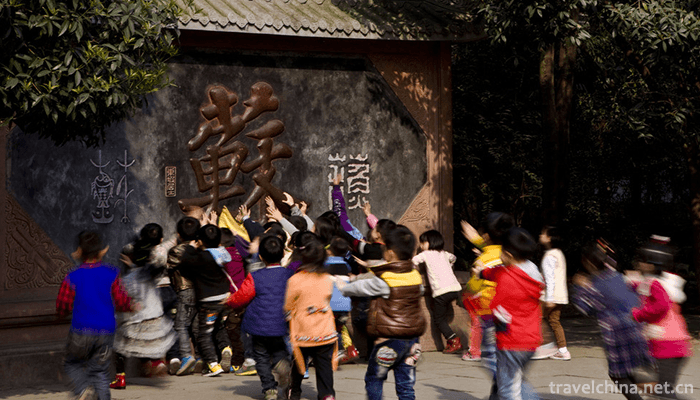
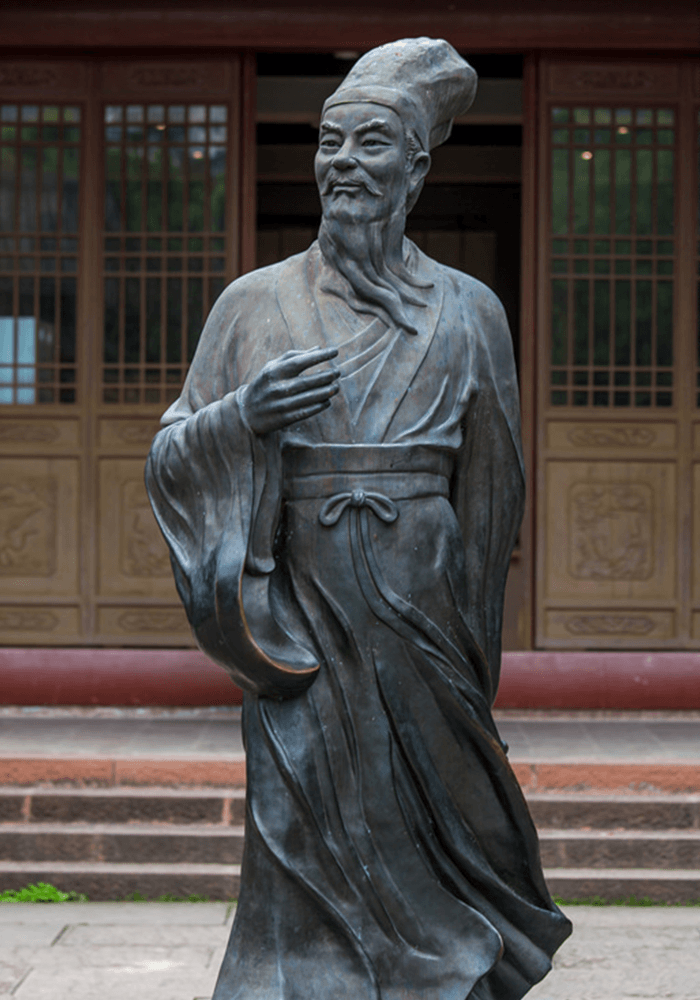
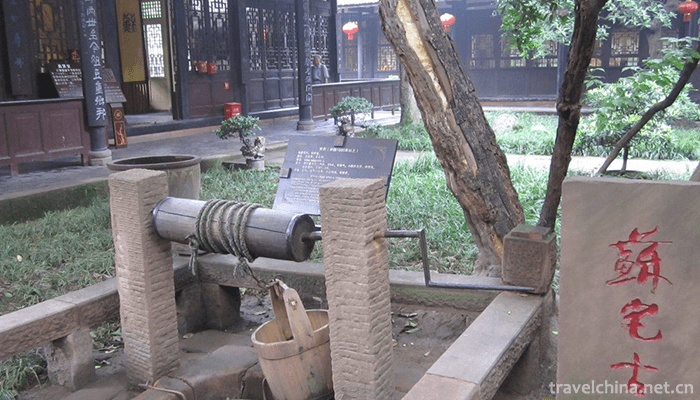
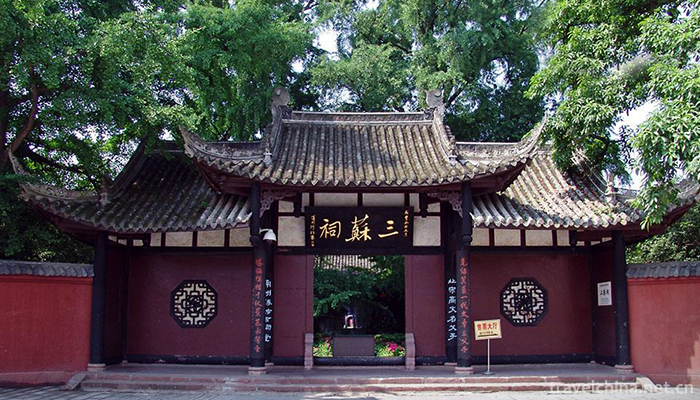
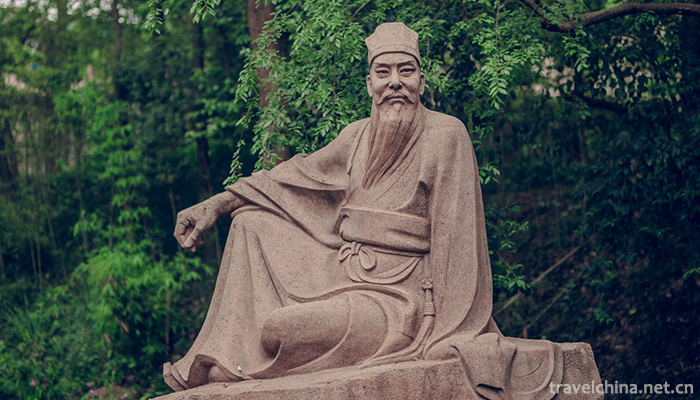
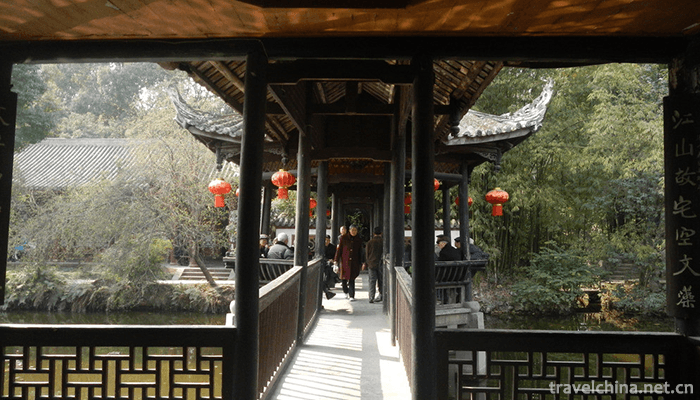
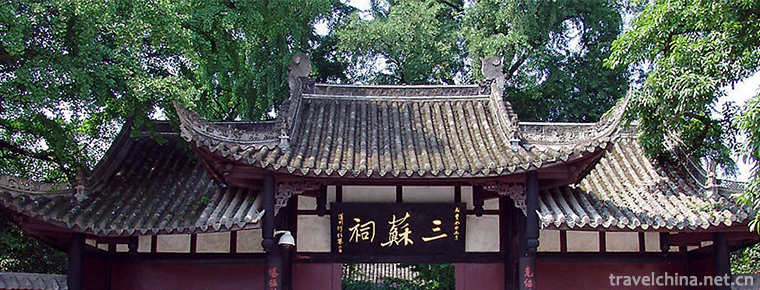
Sansu Temple Scenic Area
-
Shantou beef ball
Views: 479 Time 2018-11-02 -
Wonton Noodle
The wonton noodle is also called the bamboo rising face. It is a characteristic snack in Guangzhou. It originated in Guangzhou and Guangdong cuisine
Views: 236 Time 2018-11-14 -
Yunpu Dongtian Tourist Area
Yimeng Yunpu Cave Tianshan Scenic Area is located in Feixian County, Shandong Province. There are five scenic spots: Tour Stone, Tianmeng Lake, Drunken Stone Forest
Views: 122 Time 2018-12-22 -
Golden Sands Beach
Golden Beach is located in the southern end of Shandong Peninsula, the Yellow Sea coast of Qingdao Huangdao District, Golden Beach Road. It is bordered by the Yellow Sea in the South and stretches
Views: 146 Time 2019-01-26 -
Fish Swallow in Bazhen Fresh Soup
Ingredients: Six or two fish swallows are served well. Lentinus edodes, crab willow, Jinhua ham, clam, shrimp
Views: 212 Time 2019-03-27 -
Uygur Drum Music
Uygur drumming music is a kind of national instrumental music widely circulated in the Uygur communities in the north and south of Tianshan Mountains, Xinjiang. Uygur drum music is an important kind o
Views: 542 Time 2019-06-26 -
Hulusheng Dance of Yi Nationality
Hulusheng Dance of Yi Nationality, the traditional dance of Wenshan Zhuang and Miao Autonomous Prefecture in Yunnan Province, is one of the national intangible cultural heritage.
Views: 127 Time 2019-07-12 -
Peking University
Founded in 1898, Peking University was first named as Beijing Normal University Hall. It was the first national comprehensive university in China and the highest educational administrative organ at th
Views: 255 Time 2019-08-30 -
Longchi National Forest Park
Longchi National Forest Park is located in Dujiangyan City, Sichuan Province. It is only 84 kilometers away from Chengdu and 30 kilometers away from Dujiangyan. It is one of the 20 key national forest parks in China.
Views: 232 Time 2020-11-05 -
Cultural undertakings in Luzhou
By the end of 2017, Luzhou had 8 cultural centers and 142 cultural stations, including 128 Township comprehensive cultural stations, 14 urban community (street) cultural centers, 9 public libraries, 2 art galleries and 13 museums (memorial halls), all of which are free of charge.
Views: 334 Time 2020-12-14 -
Nanchong location
Nanchong City is located in the northeast of Sichuan Basin, in the middle reaches of Jialing River, between 30 ° 35 ′ N ~ 31 ° 51 ′ N and 105 ° 27 ′ ~ 106 ° 58 ′ E. With a span of 165 km from north to South and 143 km from east to west, it is adjacent to Dazhou
Views: 350 Time 2020-12-17 -
Dazhous location
Dazhou is located in the junction of Sichuan, Chongqing, Hubei and Shaanxi provinces and the Chengdu Chongqing Economic Belt in the upper reaches of the Yangtze River. It is the "East Gate" of Sichuan opening to the outside world and a key regi
Views: 275 Time 2020-12-20

